Recycling for Fun and Profit
To start the article off on the right foot, I just wanted to clarify that I had nothing directly to do with the development of either of these two “recycled” and very appealing “not-so-big garden centers.” The first time I saw either of these stores was after the major work was complete. I have told both owners, however, just how much I admire the stores. Dean Engelmann and Scott Endres at Tangletown Gardens, Minneapolis, Minn., admitted some apprehension preceding my first visit to their store during a Minnesota Nursery and Landscape Association tour. They were right to be concerned; I did tell them the outside aisles were much too crowded, but they knew that and have already worked on the problem. I met Chris Zipperer, owner of Hester & Zipperer, Savannah, Ga., when my daughter Mary Ann decided to apply her degree to garden center management.
Both Tangletown Gardens and Hester & Zipperer store #2 are great examples of the not-so-big garden center (you’ll recall references to the not-so-big garden center from a number of my previous articles). The concept springs from two inspirations: Minneapolis architect Sarah Susanka’s work to develop the not-so-big-house and my dismay of “Taj Mah” garden centers. Some of the highest sales volume stores in America are located on relatively small sites Roger’s Gardens in California comes to mind. At these not-so-big stores, the issue seems to shift from size to demographics, product mix and maximizing selling seasons and focuses attention on location and product presentation more than size. Both of our not-so-big garden centers exemplify those concepts. And each illustrates just how effective a recycled site can be.
Recyclable
Tangletown Gardens in Minneapolis (just down the street from Bachman’s in case you’re wondering about competition) is located in a renovated 1930s corner gas station that sits on a 14,000-sq.ft. lot. The location is all retail, with a 2,400-sq.ft. interior and parking on and across the street. Hester & Zipperer (H&Z) in Wilmington Island, Ga., occupies a 1960s vintage Kentucky Fried Chicken store and also sits on a 12,000-sq.ft. lot that includes parking with 6,000 sq.ft. total retail space and a 3,000-sq.ft. interior.
Both stores concentrate on a limited local market. Although Tangletown has built a reputation that brings customers from all over the Minneapolis area, they focus on the local customer base in the Tangletown community. H&Z operates three stores in the Savannah market. The smallest of the three targets is the limited market on Wilmington Island, a quaint community of young marrieds, middle-income retirees and waterfront second homeowners; few customers cross the two bridges that afford access to the island.
Even with such extremes of climate, both stores operate year-round. That means they are fully staffed and fully stocked all year. For H&Z it’s easy to sell year-round to a community that enjoys a mild microclimate, which may be as much as 5° F warmer than Á the surrounding Atlantic coast. Believe me, July and August are a particular challenge. Temperatures regularly top 90° F, and the Wilmington Island Golf Club, Tybee Beach and the Intracoastal Waterway are enticing alternatives to gardening. Even a cool, dark movie theater can be a better idea. In July and August, shade gardening and simple water features dominate the inventory.
By contrast, Tangletown must combat the winter in Minneapolis. A quick check of Tangletown’s Web site reveals the product offer in winter. From January 22 to March 26 the store offers 10 Saturday-morning programs, all free, to keep customers coming into the store. While the customer is in the store, offerings from candles to orchids to oriental accessories allow the winter gardener welcome respite at a price point that keeps the store at more than break even. For both stores, attention to detail in product mix for each selling season is key. As Dean Engelmann at Tangletown says, “High-intensity retail requires high-intensity detail.” In other words, the store has to work in all selling seasons. That starts with staff, stock and cleanliness.
And, while H&Z must maintain the exterior sales area year-round, Tangletown turns its winter attention to the interior of the store. That’s why the interior renovation is so important. No fluorescent lights and metal gondolas here; the interior of Tangletown is as cozy and intimate as the interior of the H&Z store is open airy. And the product offering differs from season to season; it is no longer enough to buy stuff from a catalog or a market and put it on the shelf to gather dust until it goes to the sale table.
Ideas that Work
So, what makes these small spaces really work? Both Tangletown and H&Z rely on offsite warehouse and production. Tangletown operates its own growing facility and ships to the store; it boasts more than 3,000 perennials and 400 hostas in its offering. Obviously, the 14,000-sq.ft. site can’t display all these varieties at once; products are brought to the store at the point of retail readiness, assuring the customer sees the product at the peak of appeal and enhancing product turn. H&Z buys from local and national growers, with greater emphasis on specially selected nursery products to accommodate a year-round outdoor planting season. According to Zipperer, one of the keys to the Á success of the Wilmington Island store is the warehouse and distribution center located at one of the other retail sites. With no room taken up for storage, the entire facility can be retail. Tangletown warehouses product at its growing facility to minimize the need for on-site storage. These off-site facilities also provide space for office functions that would otherwise take up precious retail space.
Both stores are profitable and have been since they opened. H&Z has enjoyed annual increases of 10-15 percent. From year one to year two, Tangletown increased sales by 30 percent. Part of that profitability is limited staffing; H&Z can operate with as little as two staff members. Tangletown staffs more intensely with 20-25 people. Part of that profitability is limited inventory and maximum product turn. Because the physical space is limited, product selection in all categories requires attention. It’s a lot like being required to write only one page instead of 20; you have to work harder at getting the story told with greater economy. It’s the same with a small store; to be profitable, what goes on the shelf must be selected to sell at full margin within the designated selling season. With that stipulation, buying tends to be more focused. And, just like Wal-Mart, what doesn’t sell goes out of inventory (permanently) to make room for a more profitable item. Such retailing takes more work than just keeping the shelves full but tends to put more money in the till.
Utilizing Renovation Opportunity
One of the most difficult discussions I have during nearly all renovation projects is why a particular department doesn’t need more room. The discussion can be especially adversarial when the department in question is full of merchandise that didn’t sell in the previous year plants that must be heeled in for winter and gee gaws and jim cracks (a.k.a. gifts) that must be packed in boxes and fills the space that is supposedly too small. A deal that was obtained because of quantity is always the cause of the argument, but if the product just sits in inventory until it is no longer saleable or must be sold at half price, I wonder if the deal is so good after all. For both Tangletown and H&Z, such pitfalls are mitigated by the very size of the store.
As with all renovation projects, both Tangletown and H&Z encountered a unique set of “obstructures.” In my experience, I’ve seen greenhouses, injector systems, coolers and even loading docks get in the way of necessary renovations. Tangletown had to remove years of sheet metal siding to reveal the original brickwork, gut the interior and recover every surface. H&Z had to remove a commercial kitchen and rid the store of the smell of fried chicken. Scott and Dean did most of the demolition and reconstruction themselves. Chris Zipperer completed his renovation in two stages: first tackling the easier front and exterior of the store and later renovating the kitchen area as additional retail. KFC’s 1960s gingerbread exterior lends itself well to an appealing garden center exterior with minimum alteration.
Store Presentation
Horti Fair Holds Top Position
While the Hester & Zipperer store relies heavily (perhaps too heavily as do many long-standing stores) on its name equity in the market and limited competition, Tangletown has developed a full line of product extensions, including clothing, mugs and hats, candles and other related house-branded products to solidify its relatively new name. In a market as competitive as Minneapolis, such an investment is a necessity.
Beyond their uniqueness in product presentation, each store offers a range of retail amenities: modern rest rooms, efficient checkout, product delivery, easy store access and distinct sun and shade shopping areas. Remember, that’s the first question consumers ask: sun or shade. While H&Z enjoys the convenience of fast-food parking and a circular driveway that once served the drive up window, Tangletown is parking challenged. Customers parallel park on the street or use a lot across the street. It’s not the best, but it works.
Each of these small, renovated sites is a project Sarah Susanka and I can admire. The stores function year-round to serve the needs of the staff and the customers in a way larger spaces could never accomplish. Every gardener can appreciate this unique kind of recycling, and every retailer can appreciate this kind of success.



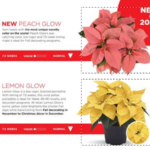

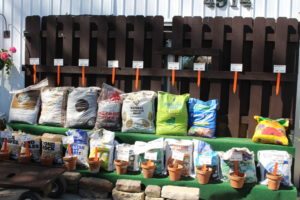
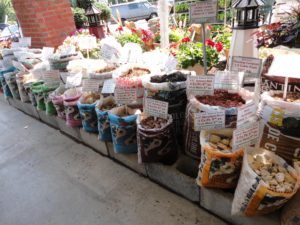
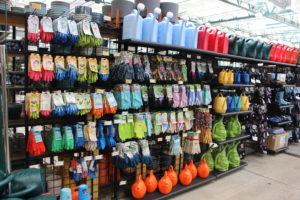
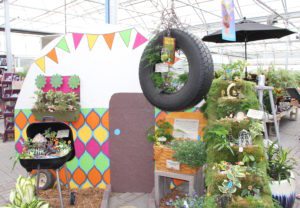
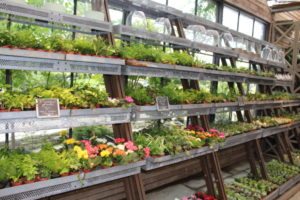
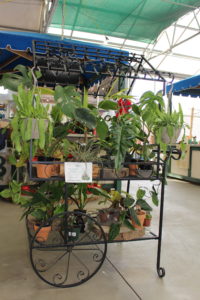
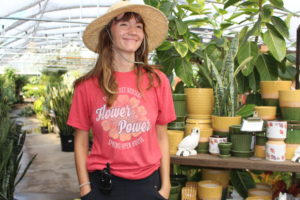
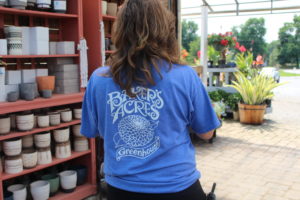
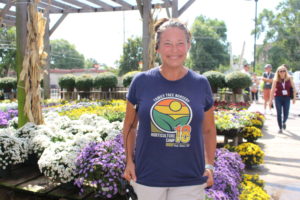
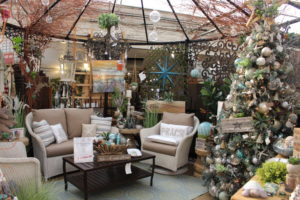
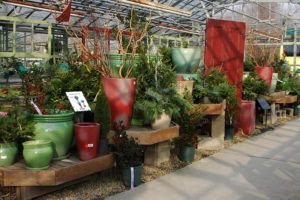
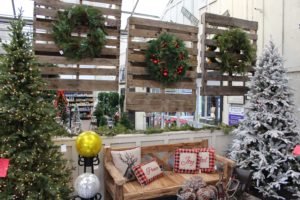
 Videos
Videos





